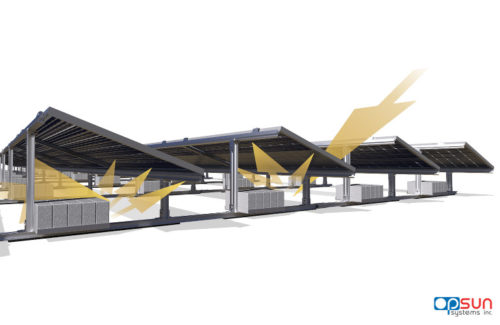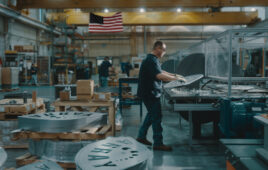Bifacial solar racking company Opsun today unveiled a free online tool that provides realistic estimates for the yield of bifacial solar panels on flat roofs — Opsunizer.
 “Bifacial solar panels have been around for some time, but solar developers and investors have struggled to understand its added value. The Opsunizer is a simple estimation tool that quickly produces a side-by-side comparison between monofacial and bifacial systems. This should help developers understand if and when it pays to go with bifacial solar panels on a flat roof,” said Tyler Stewart, from Noir3 Energy, a Texas-based commercial consulting agency.
“Bifacial solar panels have been around for some time, but solar developers and investors have struggled to understand its added value. The Opsunizer is a simple estimation tool that quickly produces a side-by-side comparison between monofacial and bifacial systems. This should help developers understand if and when it pays to go with bifacial solar panels on a flat roof,” said Tyler Stewart, from Noir3 Energy, a Texas-based commercial consulting agency.
To accurately assess the value of bifacial solar panels on a flat commercial roof, a project developer must solve a triple equation: an estimate of the extra gains produced by bifacial solar panels vs. the panels’ tilt angle, quantity, and layout vs. financial revenues of each option at each different projects cost (in $/W).
Comparing different tilt angles and layout scenarios with their own energy generation and costs has historically been possible with bankable software such as PVSyst, but it was a long and tedious process, at best. The Opsunizer provides a quick and completely integrated solution to all of the above challenges. Leveraging years of testing and monitoring on commercial bifacial solar projects, Opsun developed a tool that unlocks the knowledge necessary to understanding the extra value of bifacial solar panels when installed on Opsun’s bifacial-optimized solar panel racking, the SunRail SR3.
By working with research centers such as Sandia National Labs, and by reviewing peer-reviewed papers and bifacial solar panels manufacturers’ documentation, Opsun has developed a software that can generate viable estimates for annual bifacial gains. The Opsunizer thus allows for different tilt-angle and design scenarios to be created for the same roof and compared side-by-side, within minutes. The software will automatically generate layouts, bifacial solar panels extra energy yield estimations and financial return estimations compared with a monofacial equivalent design.
“At last, bifacial is made accessible to the people. It is the tool solar project creators need to design the best and highest performance solar system,” said Sébastien Rivard, Director of Sales with Opsun. “When coupled with Opsun’s best-in-class racking, the Opsunizer will democratize the access to bifacial solar energy and further contribute to a modern green energy grid.”




Hi Solarman, the assumption is that the bifacial solar panels are installer 10-18 inches (not feet!) from the roof membrane. It’s quite easy with Opsun racking, but not all manufacturers will allow this. Also, you need a racking system without a wind deflector, because adding a wind deflector would block all the light.
What we do in our models is that we degrade the albedo (reduce reflectivity) over the years. A new membrane may be 80% reflective, but a soiled one will only be 60%, which is plenty to reap the rewards of going with bifacial solar panels. There are good white papers on that topic out there! Have a nice day!
The deal here is the assumption that bifacial solar PV will be installed elevated up around some eight to ten feet off of the ground. If one puts bifacial on the roof of their home or business, would thoroughly cleaning the roof and laying down a heavy coat of white roofing sealant enable some back side power generation every day?